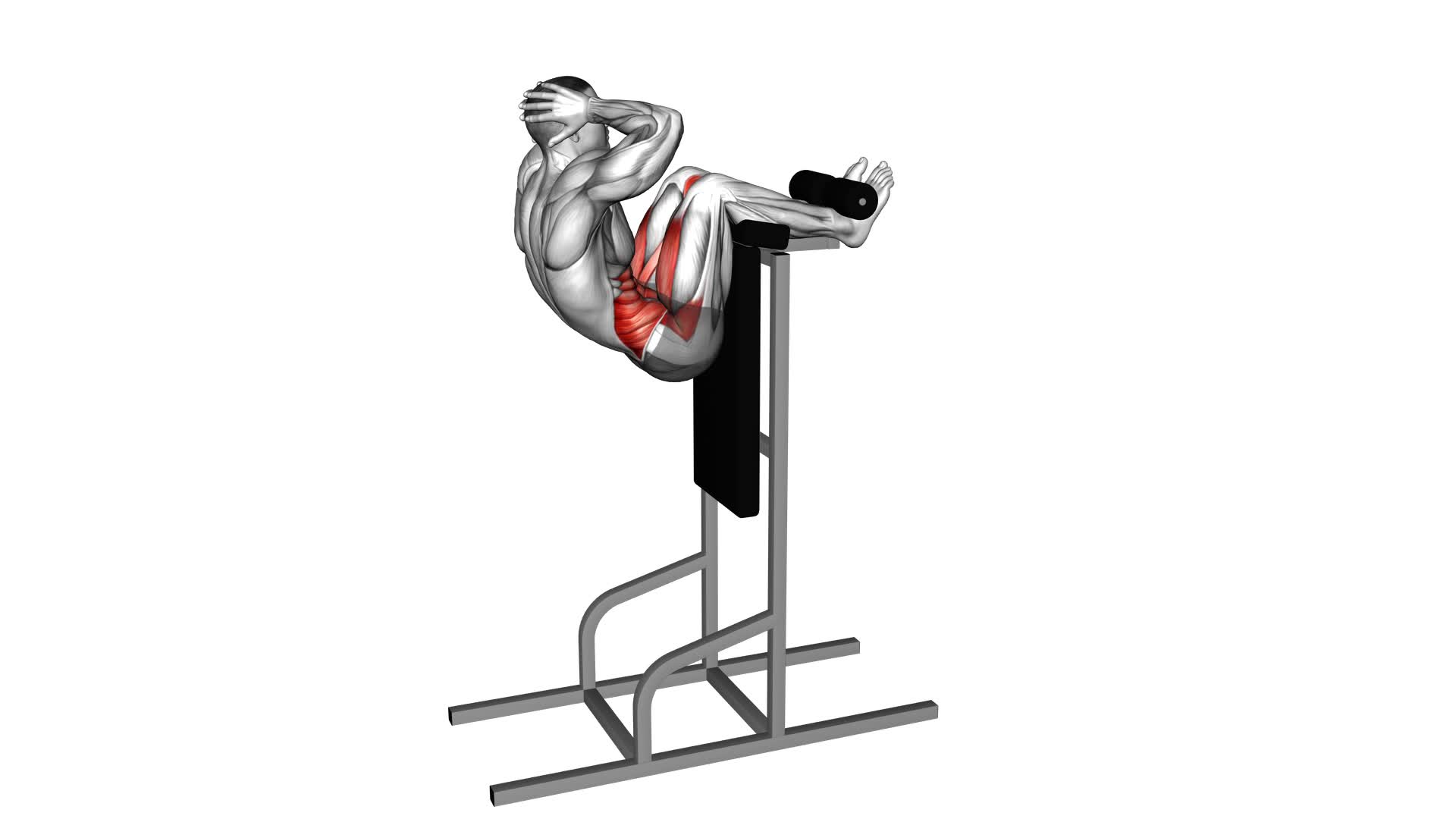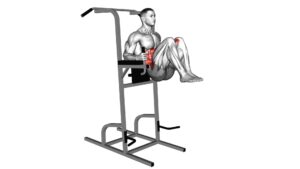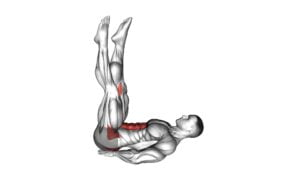Vertical Sit-up (male) – Video Exercise Guide & Tips

Are you looking to strengthen your core and build a ripped six-pack? Look no further than the vertical sit-up.
Watch This Exercise Video
This exercise targets your abdominal muscles, helping you achieve a strong and defined midsection.
In this video exercise guide, we'll show you the proper technique, equipment needed, common mistakes to avoid, variations and progressions, as well as tips for maximizing your results.
Get ready to take your ab workout to the next level!
Key Takeaways
- Proper technique and equipment are crucial for the effectiveness and safety of vertical sit-ups.
- Common mistakes to avoid include using momentum, neglecting proper form, and not engaging the core muscles.
- Variations and progressions of the exercise can increase intensity and target different muscle groups.
- Maximizing results involves engaging core muscles, controlling the descent, breathing properly, considering dietary considerations, and implementing recovery strategies.
Proper Technique
To perform the vertical sit-up exercise correctly, position yourself with your feet shoulder-width apart and your hands clasped behind your head. Many people have common misconceptions about this exercise, but understanding the benefits of proper technique is crucial for achieving optimal results.
One common misconception is that the vertical sit-up only targets the abdominal muscles. While it does primarily work the abs, it also engages the hip flexors and lower back muscles. By maintaining proper form throughout the exercise, you can effectively strengthen and tone these areas.
Another benefit of using proper technique during the vertical sit-up is the reduced risk of injury. When performed incorrectly, this exercise can strain the neck and back. By keeping your hands clasped behind your head and maintaining a neutral spine position, you can minimize the risk of discomfort or injury.
Proper technique also ensures that you're getting the most out of your workout. By fully engaging your core muscles and maintaining control throughout the movement, you increase the intensity and effectiveness of the exercise.
Equipment Needed
To properly perform the vertical sit-up exercise, you'll need minimal equipment. In fact, all you really need is a sturdy vertical bar or a pull-up bar. This equipment will provide you with the necessary support and stability to execute the exercise correctly.
Using a vertical bar or a pull-up bar allows you to hang freely, which engages your core and upper body muscles effectively. It also provides a stable anchor point for your feet, allowing you to maintain proper form throughout the exercise. Additionally, this equipment enables you to perform alternative exercises such as hanging leg raises or knee tucks, which target your abs and improve your overall core strength.
The benefits of using equipment for the vertical sit-up exercise are numerous. Firstly, it adds variety to your workout routine, preventing boredom and keeping you motivated. Secondly, it increases the difficulty level, allowing you to challenge yourself and continuously progress. Lastly, using equipment ensures proper form and reduces the risk of injury, as it provides stability and support.
Common Mistakes to Avoid
Avoid these common mistakes when performing vertical sit-ups to ensure you get the most out of your workout:
- Using momentum: One of the most common mistakes is relying on momentum to complete the movement. This not only reduces the effectiveness of the exercise but also puts unnecessary strain on your lower back.
- Neglecting proper form: It's crucial to maintain proper form throughout the exercise. Avoid rounding your back and instead focus on keeping your spine neutral. This will help engage your core muscles more effectively.
- Not engaging the core: Many people make the mistake of not fully engaging their core muscles during vertical sit-ups. To maximize the benefits, consciously contract your abdominal muscles and focus on using them to lift your upper body.
- Going too fast: Rapidly performing sit-ups can lead to poor form and reduced effectiveness. Instead, aim for controlled and deliberate movements, focusing on engaging your core muscles throughout the entire range of motion.
- Neglecting breathing: Proper breathing technique is often overlooked during vertical sit-ups. Remember to exhale as you lift your upper body and inhale as you lower it back down. This will help stabilize your core and improve your overall performance.
Variations and Progressions
Now let's explore some variations and progressions you can incorporate into your vertical sit-up routine to further challenge your core muscles and enhance your overall fitness.
By adding advanced techniques to your vertical sit-ups, you can increase the intensity and effectiveness of your workout.
One variation you can try is the weighted vertical sit-up. Instead of using just your body weight, hold a dumbbell or a weighted plate against your chest while performing the exercise. This added resistance will engage your abdominal muscles even more, leading to greater strength gains.
Another progression is the single-leg vertical sit-up. By lifting one leg off the ground while performing the sit-up, you increase the demand on your core muscles, particularly the obliques, as they work harder to stabilize your body.
Additionally, you can incorporate stability challenges into your vertical sit-up routine. Try performing the exercise on a stability ball or a Bosu ball. These unstable surfaces will engage your core muscles even more as they work to maintain balance throughout the movement.
The benefits of incorporating these advanced techniques into your vertical sit-up routine are numerous. Not only will you strengthen your core muscles, but you'll also improve your overall stability and balance. Additionally, by challenging yourself with these variations and progressions, you'll continue to see progress in your fitness journey.
Tips for Maximizing Results
To maximize your results with vertical sit-ups, focus on maintaining proper form and breathing technique throughout the exercise. Here are some tips to help you get the most out of your workout:
- Engage your core: Make sure to activate your abdominal muscles and keep them tight throughout the movement. This will help you target the right muscles and increase the effectiveness of the exercise.
- Control your descent: Avoid simply dropping down when lowering yourself back to the starting position. Instead, focus on controlling the movement and engaging your core muscles to provide resistance.
- Breathe properly: Exhale as you contract your abdominal muscles and lift your body up. Inhale as you lower yourself back down. This proper breathing technique will help you maintain control and maximize the benefits of the exercise.
- Consider your diet: To see optimal results, it's important to pay attention to your dietary considerations. Ensure you're consuming a balanced diet that includes enough protein to support muscle growth and repair.
- Implement recovery strategies: Give your muscles time to recover by incorporating recovery strategies such as adequate rest, stretching, and foam rolling. This will help prevent injury and improve overall performance.
Frequently Asked Questions
How Often Should I Perform Vertical Sit-Ups in My Workout Routine?
To get the most out of your workout routine, you may be wondering how often you should perform vertical sit-ups.
Vertical sit-ups, when done correctly, can be a great way to strengthen your core muscles.
The frequency of vertical sit-ups will depend on your fitness level and goals. It's generally recommended to incorporate them into your routine 2-3 times a week.
Can Vertical Sit-Ups Help Me Achieve a Six-Pack Abs?
Vertical sit-ups can definitely help you achieve six-pack abs. They're a great alternative to traditional sit-ups as they target your abdominal muscles in a different way.
However, it's important to note that no exercise alone can give you a six-pack. You also need to maintain a strict diet to reduce body fat and reveal your abs.
Is It Necessary to Warm up Before Performing Vertical Sit-Ups?
Before performing vertical sit-ups, it's necessary for you to warm up. Incorporating dynamic stretches can provide several benefits. It helps increase blood flow to your muscles, improves flexibility, and reduces the risk of injury.
Additionally, warming up prepares your body for the intense workout ahead, enhancing your performance during vertical sit-ups. Remember to avoid common mistakes like using momentum or straining your neck. Stay focused and maintain proper form for maximum effectiveness.
Can I Do Vertical Sit-Ups if I Have Lower Back Problems?
If you have lower back problems, it may not be advisable to do vertical sit-ups. It's important to listen to your body and avoid exercises that could worsen your condition.
Instead, consider alternative exercises that can still target your core muscles without putting strain on your lower back. Some alternatives include planks, bird dogs, or seated knee tucks. These exercises can also help improve core strength and stability, which is one of the benefits of vertical sit-ups.
Are There Any Modifications for Beginners Who Find Vertical Sit-Ups Challenging?
If you find vertical sit-ups challenging as a beginner, there are modifications that can help you. These modifications can make the exercise more attainable while still allowing you to reap the benefits of vertical sit-ups.
By starting with a smaller range of motion or using a stability ball for support, you can gradually build strength and improve your form.
Remember to listen to your body and progress at your own pace to avoid any further discomfort or injury.
Conclusion
In conclusion, the vertical sit-up is a highly effective exercise for strengthening the core muscles. By maintaining proper technique and using the necessary equipment, you can avoid common mistakes and maximize your results.
Additionally, incorporating variations and progressions into your routine can help challenge your muscles and keep your workouts interesting. Remember to follow these tips and stay consistent to achieve the best possible outcomes from this exercise.

Author
Years ago, the spark of my life’s passion ignited in my mind the moment I stepped into the local gym for the first time. The inaugural bead of perspiration, the initial endeavor, the very first surge of endorphins, and a sense of pride that washed over me post-workout marked the beginning of my deep-seated interest in strength sports, fitness, and sports nutrition. This very curiosity blossomed rapidly into a profound fascination, propelling me to earn a Master’s degree in Physical Education from the Academy of Physical Education in Krakow, followed by a Sports Manager diploma from the Jagiellonian University. My journey of growth led me to gain more specialized qualifications, such as being a certified personal trainer with a focus on sports dietetics, a lifeguard, and an instructor for wellness and corrective gymnastics. Theoretical knowledge paired seamlessly with practical experience, reinforcing my belief that the transformation of individuals under my guidance was also a reflection of my personal growth. This belief holds true even today. Each day, I strive to push the boundaries and explore new realms. These realms gently elevate me to greater heights. The unique combination of passion for my field and the continuous quest for growth fuels my drive to break new ground.



